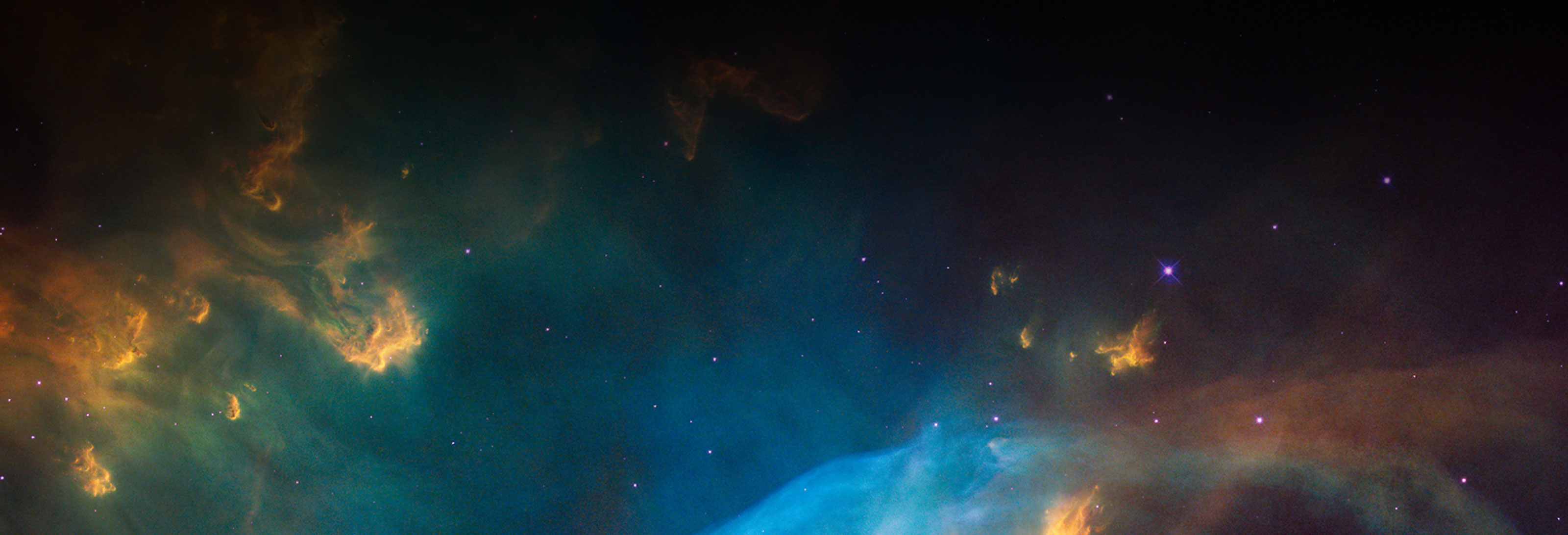Oxygen isotopic compositions of olivine and carbonate in OREX-800045-107
Laurette Piani. 2024
Here we report the isotopic composition of 10 olivine grains isolated in the fine-grained material of three particles of OREX-800045-107.
10.60707/z2bq-vg05
Oxygen isotopic compositions of olivine and carbonate in OREX-800045-107
Laurette Piani. 2024
Here we report the isotopic composition of 10 olivine grains isolated in the fine-grained material of three particles of OREX-800045-107.
10.60707/mbgr-a207
Oxygen isotopic compositions of olivine and carbonate in OREX-800045-103
Laurette Piani. 2024
Here we report the isotopic composition of 7 olivine and 8 carbonate grains isolated in the fine-grained material of three particles of OREX-800045-103.
10.60707/3k9y-fn08
Oxygen isotopic compositions of olivine and carbonate in OREX-800045-103
Laurette Piani. 2024
Here we report the isotopic composition of 7 olivine and 8 carbonate grains isolated in the fine-grained material of three particles of OREX-800045-103.
10.60707/ps65-7j23
Xenon Isotopic Analysis of OSIRIS REx sample 803060-0
Sarah Crowther, Jamie Gilmour. 2024
The dataset includes numbers of atoms of 132Xe and isotope ratios of the other xenon isotopes to 132Xe for each of a series of laser step heating analyses of the sample. Xenon was released from the sample and admitted into the RELAX (Refrigerator Enhanced Laser Analyser for Xenon) time-of-flight, resonance ionization mass spectrometer at the University of Manchester for xenon isotopic analysis. 56 distinct, sequentially increasing temperature steps were analysed and calibrated with reference to air aliquots and blanks. Temperature was increased by increasing the power delivered to the sample by a fiber laser. The purpose of the dataset is to test Hypothesis 4 of the OSIRIS-REx Sample Analysis Plan. The data reveal a bulk xenon isotopic composition similar to Average Carbonaceous Chondrite Xenon, consisting of Q-Xe with excesses of 134Xe and 136Xe consistent with the presence of presolar nanodiamonds hosting Xe-HL; the presence of presolar material supports Hypotheses 3.2: Bennu contains dust grains that condensed in the gaseous envelopes around ancient stars or the ejecta of novae or supernovae (Lauretta et al. 2015) and 4.3: The initial constituents of Bennu’s parent asteroid were materials that were inherited from the protosolar molecular cloud or were formed and altered in the protoplanetary disk, largely composed of: presolar grains, chondrules, refractory inclusions, crystalline and amorphous silicates, metals, sulfides, oxides, phosphates, organic compounds (SOM and IOM), ices (e.g., H2O, CO2, NH3, etc.), The close similarity of bulk xenon signature to AVCC supports Hypothesis 4.4: Bennu’s parent asteroid accreted in the outer protoplanetary disk, beyond Jupiter, as recorded by distinct isotopic anomalies in a variety of elements (e.g., O, Ca, Ti, Cr, Ni, Zr, Mo, Ru, Pd, Ba, Nd, etc.) (Rowe et al. 1994; McKeegan et al. 1998; Trinquier et al. 2007; Leya et al. 2008; Warren 2011; Connelly et al. 2012; Kruijer et al. 2020; Mezger et al. 2020; Schrader et al. 2020). The presence of excess 129Xe from decay of 129I (half life 16 Myr) in low temperature releases supports Hypothesis 4.1 The initial constituents of Bennu’s parent asteroid formed over several million years of solar system history, starting at a t0 of 4.567 Gyr (Kita et al. 2013; Pape et al. 2019; Connelly et al. 2012) and Hypothesis 5.1: Bennu’s parent asteroid was heated by the decay of short-lived radionuclides for ~10 Myr after accretion (e.g., Miyamoto 1991; Steele et al. 2017).
10.60707/sjkk-h605
Xenon Isotopic Analysis of OSIRIS REx sample 803060-0
Sarah Crowther, Jamie Gilmour. 2024
The dataset includes numbers of atoms of 132Xe and isotope ratios of the other xenon isotopes to 132Xe for each of a series of laser step heating analyses of the sample. Xenon was released from the sample and admitted into the RELAX (Refrigerator Enhanced Laser Analyser for Xenon) time-of-flight, resonance ionization mass spectrometer at the University of Manchester for xenon isotopic analysis. 56 distinct, sequentially increasing temperature steps were analysed and calibrated with reference to air aliquots and blanks. Temperature was increased by increasing the power delivered to the sample by a fiber laser. The purpose of the dataset is to test Hypothesis 4 of the OSIRIS-REx Sample Analysis Plan. The data reveal a bulk xenon isotopic composition similar to Average Carbonaceous Chondrite Xenon, consisting of Q-Xe with excesses of 134Xe and 136Xe consistent with the presence of presolar nanodiamonds hosting Xe-HL; the presence of presolar material supports Hypotheses 3.2: Bennu contains dust grains that condensed in the gaseous envelopes around ancient stars or the ejecta of novae or supernovae (Lauretta et al. 2015) and 4.3: The initial constituents of Bennu’s parent asteroid were materials that were inherited from the protosolar molecular cloud or were formed and altered in the protoplanetary disk, largely composed of: presolar grains, chondrules, refractory inclusions, crystalline and amorphous silicates, metals, sulfides, oxides, phosphates, organic compounds (SOM and IOM), ices (e.g., H2O, CO2, NH3, etc.), The close similarity of bulk xenon signature to AVCC supports Hypothesis 4.4: Bennu’s parent asteroid accreted in the outer protoplanetary disk, beyond Jupiter, as recorded by distinct isotopic anomalies in a variety of elements (e.g., O, Ca, Ti, Cr, Ni, Zr, Mo, Ru, Pd, Ba, Nd, etc.) (Rowe et al. 1994; McKeegan et al. 1998; Trinquier et al. 2007; Leya et al. 2008; Warren 2011; Connelly et al. 2012; Kruijer et al. 2020; Mezger et al. 2020; Schrader et al. 2020). The presence of excess 129Xe from decay of 129I (half life 16 Myr) in low temperature releases supports Hypothesis 4.1 The initial constituents of Bennu’s parent asteroid formed over several million years of solar system history, starting at a t0 of 4.567 Gyr (Kita et al. 2013; Pape et al. 2019; Connelly et al. 2012) and Hypothesis 5.1: Bennu’s parent asteroid was heated by the decay of short-lived radionuclides for ~10 Myr after accretion (e.g., Miyamoto 1991; Steele et al. 2017).
10.60707/q4b0-v203
Concentration data
Quinn Shollenberger, Josh Wimpenny, Greg Brennecka, Jan Render. 2024
Data for major and trace elemental abundances
10.60707/d62h-j641
Concentration data
Quinn Shollenberger, Josh Wimpenny, Greg Brennecka, Jan Render. 2024
Data for major and trace elemental abundances
10.60707/1k0j-p360
IC anion analysis of acid hydrolyzed washes
Tanya Peretyazhko. 2024
The dataset contains ion chromatography measurements of phosphate in acid hydrolyzed washes from Bennu, Murchison, fused silica samples, and procedural blank.
10.60707/3e8j-7g55
IC anion analysis of acid hydrolyzed washes
Tanya Peretyazhko. 2024
The dataset contains ion chromatography measurements of chloride and sulfate in acid hydrolyzed washes from Bennu, Murchison, fused silica samples, and procedural blank.
10.60707/g5n1-0d67
Ti isotope data
Quinn Shollenberger, Greg Brennecka, Jan Render. 2024
Data for Ti isotopes on OREX-803015-101_1
10.60707/0y88-ps96
Ti isotope data
Quinn Shollenberger, Greg Brennecka, Jan Render. 2024
Data for Ti isotopes on OREX-803015-101_1
10.60707/fr4t-fd04
MC-ICP-MS mass-independent Ti isotope analyses of aggregate sample OREX_803015-100
Maria Schonbachler, Miriam Rufenacht. 2024
Here, we report the mass-independent Ti isotope composition of the Bennu quick-look sample OREX-501018-100. We also present data for the terrestrial standard BHVO-2 and the CM2 chondrite Aguas Zarcas, which were used to monitor data quality. Mass-independent isotope analyses were carried out at ETH Zurich (Switzerland) using a Neptune Plus MC-ICP-MS. The composition of Bennu is 0.26 ± 0.18 (±2SE; n=4), 0.03 ± 0.07 and 1.94 ± 0.16 for ε46Ti/47Ti, ε48Ti/47Ti and ε50Ti/47Ti, respectively. The Ti isotope data of Bennu overlaps with that of CI chondrites and Ryugu. Therefore, the composition of Bennu closely resembles our best estimate of the initial composition of the solar system. This confirms the mission hypothesis that Bennu formed in the carbonaceous reservoir, which consists of material that originated beyond the snowline.
10.60707/67jn-c791
MC-ICP-MS mass-independent Ti isotope analyses of aggregate sample OREX_803015-100
Maria Schonbachler, Miriam Rufenacht. 2024
Here, we report the mass-independent Ti isotope composition of the Bennu quick-look sample OREX-501018-100. We also present data for the terrestrial standard BHVO-2 and the CM2 chondrite Aguas Zarcas, which were used to monitor data quality. Mass-independent isotope analyses were carried out at ETH Zurich (Switzerland) using a Neptune Plus MC-ICP-MS. The composition of Bennu is 0.26 ± 0.18 (±2SE; n=4), 0.03 ± 0.07 and 1.94 ± 0.16 for ε46Ti/47Ti, ε48Ti/47Ti and ε50Ti/47Ti, respectively. The Ti isotope data of Bennu overlaps with that of CI chondrites and Ryugu. Therefore, the composition of Bennu closely resembles our best estimate of the initial composition of the solar system. This confirms the mission hypothesis that Bennu formed in the carbonaceous reservoir, which consists of material that originated beyond the snowline.
10.60707/dvgb-6f91
MC-ICP-MS mass-independent Ti isotope analyses of aggregate sample OREX_803015-100
Maria Schonbachler, Miriam Rufenacht. 2024
Here, we report the mass-independent Ti isotope composition of the Bennu quick-look sample OREX-501018-100. We also present data for the terrestrial standard BHVO-2 and the CM2 chondrite Aguas Zarcas, which were used to monitor data quality. Mass-independent isotope analyses were carried out at ETH Zurich (Switzerland) using a Neptune Plus MC-ICP-MS. The composition of Bennu is 0.26 ± 0.18 (±2SE; n=4), 0.03 ± 0.07 and 1.94 ± 0.16 for ε46Ti/47Ti, ε48Ti/47Ti and ε50Ti/47Ti, respectively. The Ti isotope data of Bennu overlaps with that of CI chondrites and Ryugu. Therefore, the composition of Bennu closely resembles our best estimate of the initial composition of the solar system. This confirms the mission hypothesis that Bennu formed in the carbonaceous reservoir, which consists of material that originated beyond the snowline.


